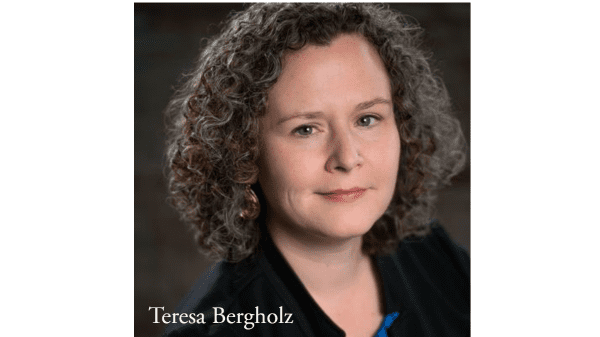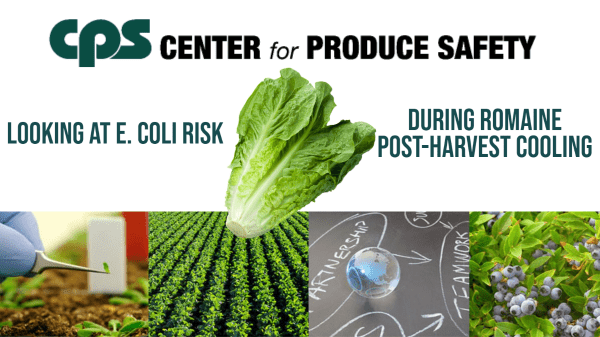Several researchers have examined the fate of Shiga toxin-producing E. coli O157:H7 bacteria on romaine lettuce in the field and during post-harvest washing at processors. But little is known about potential changes in the microorganism’s physiology during post-harvest cooling and refrigerated transport to processors, which could affect virulence and/or detectability.


Teresa Bergholz, Ph.D., with Michigan State University, hopes to characterize those changes on inoculated romaine lettuce under simulated post-harvest cold storage.
The goal is to develop an easily accessible online tool the industry can use to identify practices to help reduce the risks of E. coli O157:H7 transmission via romaine lettuce.
Compared to the growing season and processing, the time romaine spends in coolers and refrigerated transport after harvest is relatively small.
“But I think it’s a great place where our project can contribute information about what happens during this short period of time,” Bergholz said.
Also involved in the project, titled “Quantifying risk associated with changes in EHEC physiology during post-harvest pre-processing stages of leafy green production,” is co-principal investigator Jade Mitchell, Ph.D., also with MSU. She brings a background in quantitative microbial risk assessment.
“This project really requires both of our expertise,” said Bergholz, a microbiologist. “This couldn’t be possible without both of us.”
Key Takeaways
• Project focuses on period during romaine lettuce post-harvest cooling and refrigerated transport.
• Researchers will gauge pathogen physiological changes on inoculated romaine lettuce under lab-simulated post-harvest cooling.
• Researchers also will examine cooling’s impacts on E. coli O157:H7 persister cells — a form of dormancy.
• Goal is to develop an online tool to help the industry identify practices that reduce risk of E. coli O157:H7.
They’ve completed the first of the project’s two parts by systematically reviewing published literature on the subject and identifying data gaps. The information gleaned from the review will be used to develop the basis of a risk model.
At the same time, the researchers are conducting laboratory experiments that simulate cooling and transportation of romaine.
To ensure the results accurately reflect real-world scenarios, Bergholz said they sought industry input.
“We’ve benefited so much from our industry partners who shared their anonymized harvest temperature data,” she said. “We could never have collected the 5,000 data points that they shared with us. They’ve been collecting this data for years.”
The real-world data also changed some of the researchers’ initial assumptions.
“This data is invaluable because we need to have conditions in the lab that make sense,” Bergholz said. “When we have a better sense of the conditions that are actually happening in the field, it helps us tremendously.”
The research also involves E. coli O157:H7 strains from 2018, 2019 and 2020 national foodborne outbreaks.
After inoculating multiple lettuce plants with the pathogen, the researchers put them in a growth chamber for a day. They then cut the romaine and placed it in a cooler to simulate harvest and cold storage.
Each day over a five-day period, the researchers pulled samples and assayed them for the pathogen. Of particular interest was its state of dormancy.
When under stress, some microorganisms — such as E. coli O157:H7 — transition to a dormant state known as persister cells. With a slowed metabolism, persisters don’t reproduce but may still cause disease. When the stressor is removed, the cells’ metabolism returns to normal.
Another form of dormancy is viable but nonculturable, or VBNC. As their name implies, these cells cannot be cultured on agar medium, preventing commonly used detection methods.
As part of the project, the researchers plan to examine whether cold storage impacts persister and VBNC transition.
“There’s still so much that we don’t understand about the persister state and how that might be part of the continuum into VBNC,” she said. “We don’t know if being in the persister state impacts detection. We plan to purposely force cells into the persister state and determine whether we can detect them with industry detection methods.”
The research results will be used to help fill in the gaps of the risk-assessment model, which will focus on practices to reduce E. coli O157:H7 risk during the short window between romaine harvest and pre-processing.
“Maybe there’s something you can do to modify the way you’re harvesting and cooling that lets you reduce risk,” Bergholz said. “Can we shift the harvest time and how quickly we get it to the cooling center?”
About CPS
The Center for Produce Safety (CPS) BB #:339618 is a 501(c)(3), U.S. tax-exempt, charitable organization focused exclusively on providing the produce industry and government with open access to the actionable information needed to continually enhance the safety of produce.



